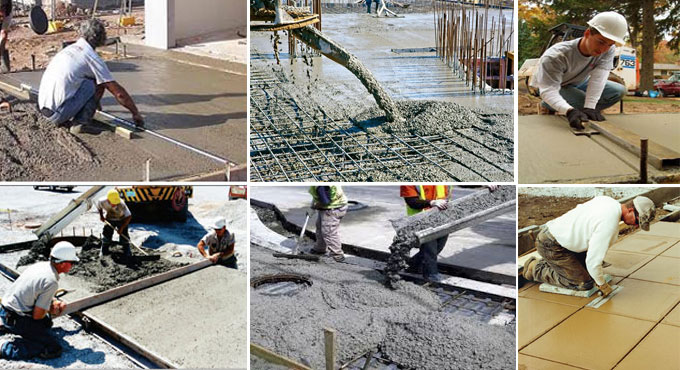Details about contraction/control joins in concrete
In order to restrain random cracking in concrete slabs, contraction/control joints are arranged in concrete. A fresh concrete mixture stands for a fluid, plastic mass that can be carved into virtually any shape, but since the material gets solidified, the volume or shrinkage is decreased significantly.
When shrinkage is controlled by getting into contact with underneath soils, granular fill, adjacent structures, or reinforcement within the concrete, tensile stresses are formed inside the concrete section. When the concrete becomes very strong in compression, the tensile strength remains only 8 to 12 percent of the compressive strength. Actually, tensile stresses function against the feeble property of the concrete material. It leads to cracking of the concrete.
The cracking can be checked with two basic strategies to maintain good functioning of the structure. The first process is to arrange steel reinforcement in the slab to retain random cracks firmly.
In this way, the cracks become small and the aggregate particles on the faces of a crack are joined so that load is transmitted across the crack. When steel reinforcement in a concrete slab is applied, the chances are increased for happening of random hairline cracks in the uncovered surface of the concrete.
The most recognized method to check random cracking in concrete slabs is to arrange contraction/control joints in the concrete surface at prearranged locations to produce weakened planes where cracking in concrete occurs in a straight line.
It makes an elegantly attractive look as the crack occurs underneath the finished concrete surface. When random cracks do not present at the concrete surface, it provides the appearance of an un-cracked section.
Concrete slabs-on-ground can function efficiently based on the following considerations. The soils or granular fill supporting the slab in service should be either undisturbed soil or well compacted. Besides, contraction joints should be arranged to develop panels in square shapes and never go beyond a length to width ratio of 1.5 to 1.
Joints are commonly spanned at distances equivalent to 24 to 30 times the slab thickness. Various load transfer devices like dowels or diamond plates are needed for joint spacing that remains in excess of 15 feet.
While placing contraction joints, they should be tooled into the concrete surface. Joints may be tooled into the surface (first pass) before the onset of bleeding or instantly with the first pass of the floating operation. If the first pass for jointing is deferred for a prolonged time, the process becomes complicated to shape clean straight line joints. Tooled joints should be reconstituted with each consecutive pass of finishing operations.
Joints are also sawed into the solidified concrete surface. If sawing is deferred for a prolonged time, the cracks may take place prior to completion of sawing. It signifies that any crack that happen prior to the concrete is sawed will make the sawed joint incompetent. Here, timing plays an important role.
Joints should be sawed once the concrete sustains the energy of sawing devoid of raveling or dislodging aggregate particles. It signifies for most concrete mixtures that sawing should be finished within the first six to 18 hours and never deferred over 24 hours. Early-entry saws also exist which may facilitate cutting to start within a few hours after disposition.
Contraction/control joints should be set to a depth of ? the slab thickness. Exact joint spacing and depth should be maintained to manage random cracking in a better way.



